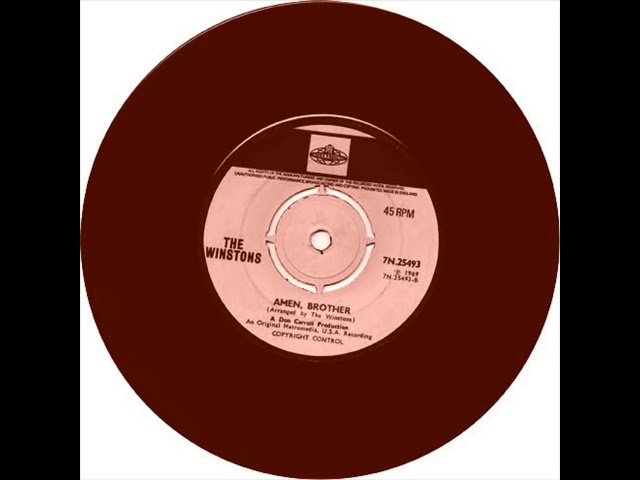Hip hop samples have been the backbone of the genre since its inception, shaping the sound and style of countless tracks. We’ve all heard those iconic beats that make our heads nod and our bodies move, but have you ever wondered where they came from? As producers and music enthusiasts, we’re constantly on the hunt for the best hip hop samples to elevate our tracks and pay homage to the legends who paved the way.
In this deep dive, we’ll explore some of the most legendary hip hop samples that have had an impact on the genre’s evolution. From the Amen Break to the Funky Drummer, we’ll uncover the origins of these sonic gems and see how they’ve been used to create timeless classics. Get ready to discover the building blocks of hip hop and gain inspiration to take your beats to the next level. Let’s kick things off with a journey through the samples that have shaped the sound of hip hop as we know it.
The Winstons – Amen, Brother
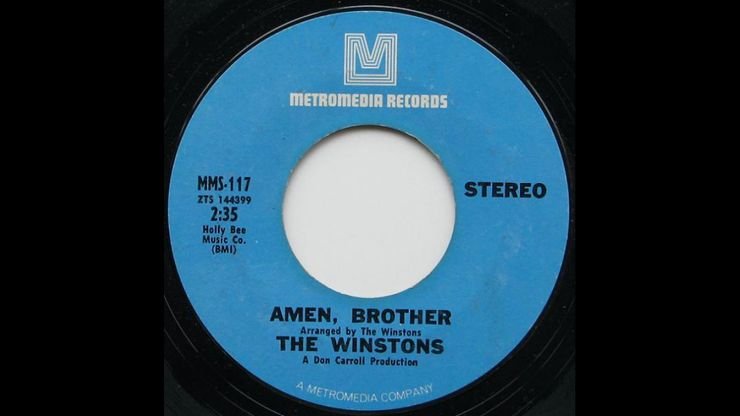
When I think about the foundation of hip hop samples, one track immediately comes to mind: “Amen, Brother” by The Winstons. This unassuming B-side from 1969 has had an impact on music that’s hard to overstate. Let’s dive into the fascinating history of this legendary sample.
Amen, Brother sample history
The story begins with The Winstons, a multiracial soul band from the southern United States. In 1969, they recorded “Color Him Father” as their single, with “Amen, Brother” on the B-side. Little did they know that a six-second drum break in this instrumental track would change music forever.
Gregory “G.C.” Coleman, the band’s drummer, laid down what we now call the “Amen Break” almost as an afterthought. It was just meant to lengthen the song, but it became the most sampled drum break in music history. Interestingly, Coleman himself wasn’t a fan of the break at first.
Amen, Brother in hip hop
The Amen Break’s journey to hip hop stardom began in 1986 when it appeared on the “Ultimate Breaks and Beats” compilation. This exposure catapulted the break into the spotlight, and hip hop producers quickly recognized its potential.
One of the earliest uses was in Salt-N-Pepa’s 1986 single “I Desire.” They even rapped about the beat’s power: “The beat is bad / The beat is pro / We’re gonna bounce this beat all over the place.” But it was NWA’s “Straight Outta Compton” in 1988 that truly launched the Amen Break into the mainstream.
Amen, Brother’s cultural impact
The Amen Break’s influence extends far beyond hip hop. It’s been used in over 6,000 songs across various genres, from David Bowie to Oasis to Amy Winehouse. In the 1990s, it became the bedrock of British dance music, particularly drum and bass and jungle.
What makes the Amen Break so special is its versatility. Producers speed it up, slow it down, chop it up, and rearrange it, creating something new each time. It’s like a musical Lego brick, infinitely adaptable and always recognizable.
Despite its massive impact, The Winstons never received royalties for their creation. Richard Spencer, the bandleader, didn’t even know about its widespread use until 1996. It’s a bittersweet story that highlights the complex relationship between creativity and copyright in music.
In a heartwarming twist, fans launched a crowdfunding campaign in 2015, raising £24,000 for Spencer. It’s a small gesture that acknowledges the immense contribution The Winstons made to music history.
The Amen Break is more than just a sample; it’s a testament to the power of music to evolve and inspire across generations and genres. As a producer, I’m in awe of how this six-second drum solo has shaped the sound of modern music.
James Brown – Funky Drummer
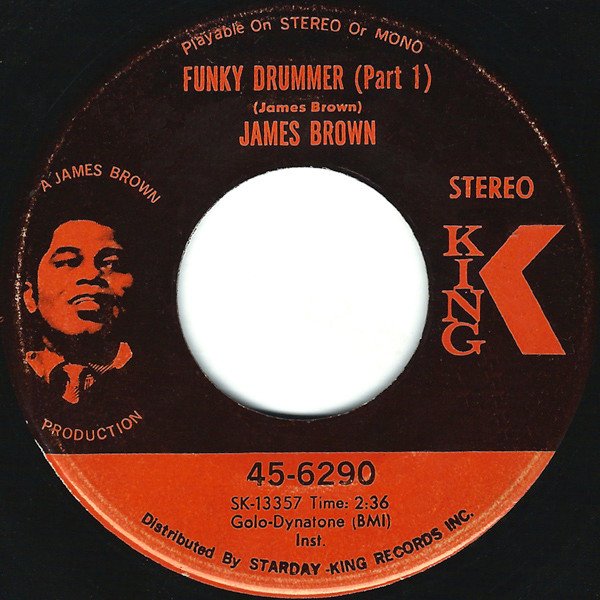
When I think about the evolution of hip hop samples, one track stands out as a game-changer: James Brown’s “Funky Drummer.” Released in 1970, this track has had an impact on music that’s nothing short of revolutionary. Let’s dive into the fascinating world of this legendary sample.
Funky Drummer sample origins
The magic happened on November 20, 1969, in Cincinnati, Ohio. James Brown and his band were in the studio, laying down what would become an extended vamp of pure funk. The track features various instruments taking turns with brief improvisations, but the real star of the show is Clyde Stubblefield’s drum break.
About five and a half minutes into the song, Brown shouts his iconic “give the drummer some,” and Stubblefield launches into an eight-bar solo that would change music history. This 20-second drum loop has become one of the most sampled musical segments in the world.
Funky Drummer in classic hip hop
The “Funky Drummer” break didn’t truly explode onto the scene until the mid-1980s when affordable sampling technology like the E-mu SP-1200 became available. From that point on, it became a staple in hip hop production.
Some of the most iconic uses of the “Funky Drummer” sample include:
- Public Enemy’s “Fight the Power” and “Rebel Without a Pause”
- N.W.A’s “F*** tha Police”
- LL Cool J’s “Mama Said Knock You Out”
- Run-DMC’s “Run’s House”
- Eric B. & Rakim’s “Lyrics of Fury”
Each of these tracks showcases a different way of using the sample, from straightforward loops to chopped and rearranged versions, demonstrating the versatility of Stubblefield’s original performance.
Funky Drummer’s lasting influence
The influence of “Funky Drummer” extends far beyond hip hop. It’s been used in over 1,500 songs across various genres, from George Michael to Ed Sheeran. Its impact on music production techniques has been profound, helping to establish sampling as a legitimate form of musical creation.
However, this widespread use has also highlighted issues in the music industry. Despite the sample’s ubiquity, Clyde Stubblefield never received royalties for its use. He once said, “People use my drum patterns on a lot of these songs… They never gave me credit, never paid me.”
Despite this, Stubblefield’s legacy lives on. His rhythm pattern on “Funky Drummer” has inspired generations of musicians and producers, proving that a single moment of musical brilliance can echo through the ages.
Incredible Bongo Band – Apache
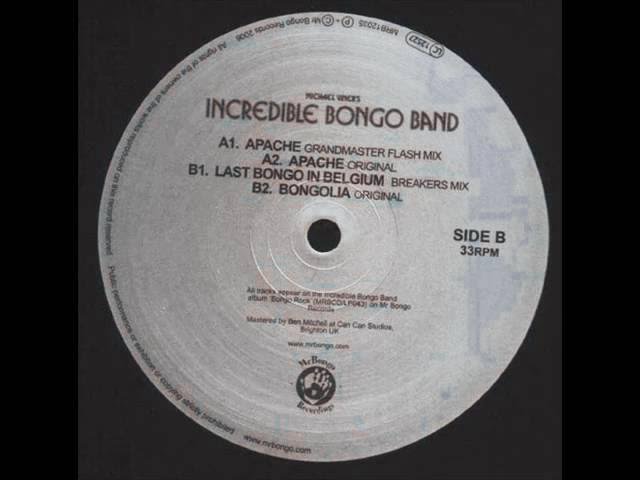
When I think about the samples that have shaped hip hop, “Apache” by the Incredible Bongo Band stands out as a true game-changer. This track has had an impact on the genre that’s hard to overstate. Let’s dive into the fascinating journey of this legendary sample.
Apache sample background
The story of “Apache” begins with Jerry Lordan, a British RAF veteran and part-time songwriter. Inspired by the tale of Massai, the last Apache warrior to surrender to the United States, Lordan composed the iconic riff. Initially recorded by British guitarist Bert Weedon, the track didn’t quite hit the mark for Lordan.
Fast forward to 1973, and we have Michael Viner, a former Robert Kennedy staffer turned MGM Records executive, assembling a group of studio musicians. This ensemble, which included Jim Gordon from Derek & the Dominos and Bahamian percussionist King Errisson, was initially brought together to record two tracks for a sci-fi film. The project expanded into a full album, “Bongo Rock,” which gave birth to the version of “Apache” that would change hip hop forever.
Apache in early hip hop
The Incredible Bongo Band’s “Apache” might have faded into obscurity if not for the keen ear of DJ Kool Herc. This pioneering Bronx DJ recognized the track’s infectious quality and began spinning it at parties in the mid-’70s. Herc’s innovative “merry-go-round” technique, mixing two copies of “Bongo Rock,” made the dance floor erupt when the now-famous “Apache” break hit.
As the ’80s rolled in, “Apache” had become a b-boy anthem. The Sugarhill Gang capitalized on its popularity with their 1981 hit “Apache (Jump On It),” adding catchy rhymes to the memorable melody and cementing the “Apache” breakdown as a hip hop classic.
Apache’s enduring popularity
What makes “Apache” so special is its versatility. DJ Kool Herc wasn’t exaggerating when he called it the “national anthem of hip-hop.” From party records to aggressive cuts, “Apache” has found its way into countless tracks across various hip hop styles.
Some notable uses include:
- Grandmaster Flash’s “The Adventures of Grandmaster Flash on the Wheels of Steel” (1981)
- LL Cool J’s “You Can’t Dance” (1985)
- Nas’ “Made You Look”
- Missy Elliott’s Grammy-winning “We Run This” (2007)
The “Apache” break has transcended its original context, becoming a staple in hip hop production. Its influence extends beyond hip hop, finding its way into drum and bass tracks like Goldie’s “Inner City Life.”
As a producer, I’m in awe of how this single track has shaped the sound of modern music. It’s a testament to the power of sampling and the endless creativity of hip hop artists. “Apache” remains a go-to sample for producers looking to add that classic hip hop flavor to their tracks.
Chic – Good Times
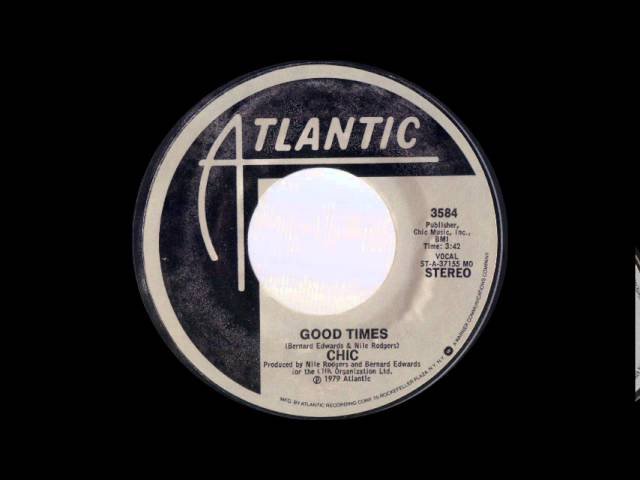
When I think about the samples that have shaped hip hop, “Good Times” by Chic stands out as a true game-changer. Released in the summer of 1979, this infectious disco track has had an impact on music that’s hard to overstate. Let’s dive into the fascinating journey of this legendary sample.
Good Times sample history
The story of “Good Times” begins with Chic’s album Risque. The opening track, an eight-minute pulsing funk jam, would soon become the backbone of countless hip hop tracks. What makes “Good Times” so special is its irresistible groove, particularly that iconic bassline laid down by Bernard Edwards.
I remember the first time I heard “Good Times” – it was impossible not to move to that rhythm. Little did I know then how this track would shape the future of music.
Good Times in hip hop’s origins
The impact of “Good Times” on hip hop was almost immediate. Just a few months after its release, the Sugarhill Gang used its bassline as the foundation for “Rapper’s Delight,” widely considered the first hip hop track pressed to vinyl.
The story goes that Nile Rodgers and Bernard Edwards of Chic were at a club when they heard the DJ playing what sounded like their song. It turned out to be an early version of “Rapper’s Delight.” This led to some legal action, resulting in Rodgers and Edwards being credited as co-writers.
Good Times’ continued relevance
What amazes me is how “Good Times” has remained relevant throughout hip hop’s evolution. From early pioneers like Grandmaster Flash and the Furious Five to modern artists like Daft Punk, its influence is still felt today.
The song’s enduring popularity is a testament to its timeless groove and infectious energy. As a producer, I’ve seen how it’s become a go-to sample for anyone looking to add a classic, funky vibe to their tracks.
What’s particularly cool is how Chic has embraced this legacy. In their live performances, they often incorporate a portion of “Rapper’s Delight,” complete with audience call-and-response. It’s a beautiful full-circle moment that celebrates the song’s impact on hip hop culture.
The Honey Drippers – Impeach the President
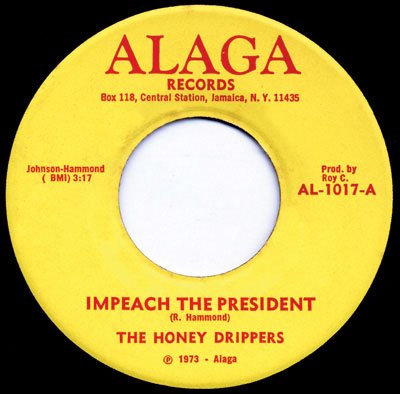
When I think about iconic hip hop samples, “Impeach the President” by The Honey Drippers immediately comes to mind. This track has had an impact on the genre that’s hard to overstate. Let’s dive into the fascinating journey of this legendary sample.
Impeach the President sample origins
Released in 1973, “Impeach the President” was more than just a funky tune – it was a protest song aimed at President Nixon during the Watergate scandal. The track was written and produced by Roy Charles Hammond, known as Roy C, but interestingly, the names of the singers and backup band remain a mystery.
What’s particularly fascinating is the story behind that iconic drum break. Roy C recalls working tirelessly with the drummer, whose name he can’t even remember, drilling him over and over in a basement in Jamaica, Queens. That hard work paid off, creating a tight, attention-grabbing beat that would shape the future of hip hop.
Impeach the President in golden age hip hop
The true magic of “Impeach the President” began in the mid-80s when sampling technology became more accessible. Marley Marl, a pioneer in hip hop production, was the first to sample and reconfigure the drum break for MC Shan’s “The Bridge” in 1986. This opened the floodgates for countless other producers.
Some notable uses include:
- Audio Two’s “Top Billin'” (1987)
- EPMD’s “Give the People” (1992)
- Nas’s “I Can” (2002)
The sample’s popularity led to legal battles, with Tuff City Records suing Sony Music and Def Jam Records in 1992 over its use in tracks by LL Cool J and EPMD.
Impeach the President’s ongoing usage
The influence of “Impeach the President” extends far beyond the golden age of hip hop. It’s been sampled in over 700 songs across various genres. From Janet Jackson to J. Cole, Dr. Dre to Digable Planets, the list of artists using this sample is truly endless.
Even in recent years, the sample continues to inspire new generations of artists. Kali Uchis, for instance, used it in her 2015 mixtape track “Mucho Gusto,” proving that this decades-old drum break still has the power to move listeners and inspire creators.
As a producer, I’m in awe of how this single track has shaped the sound of modern music. It’s a testament to the power of sampling and the endless creativity of hip hop artists. “Impeach the President” remains a go-to sample for producers looking to add that classic hip hop flavor to their tracks.
Conclusion
The exploration of legendary hip hop samples reveals the profound influence these sonic elements have had on shaping the genre’s sound and culture. From the Amen Break’s versatility to the Funky Drummer’s ubiquity, these samples have become the building blocks of countless tracks across multiple decades. The enduring popularity of samples like “Apache” and “Good Times” shows how a single musical moment can resonate through generations, inspiring creativity and pushing the boundaries of music production.
As we reflect on these iconic samples, it’s clear that their impact extends far beyond hip hop, touching various genres and sparking discussions about creativity, copyright, and musical legacy. These samples serve as a testament to the power of musical innovation and the endless possibilities of reinterpretation. To wrap up, the story of these legendary samples is not just about music, but about the evolution of an art form and its lasting impact on popular culture.
FAQs
1. What is the most iconic sample used in hip-hop music?
The track “Amen Brother” by The Winstons holds the title of the most iconic sample in hip-hop, and it is also the most sampled song in music history. It has been used over 6,000 times, nearly double the usage of the second most sampled track.
2. Which sound holds the record for being the most sampled in music history?
The most sampled sound in music history is the drum break from “Amen, Brother” by The Winstons. This sound has been sampled approximately 6005 times, particularly famous for its classic drum break that occurs 1:27 minutes into the song.
3. Who are considered the masters of sampling in hip-hop?
In hip-hop, producers such as DJ Premier, Kanye West, RZA, and the Bomb Squad are often revered as the masters of sampling. Their innovative techniques in reusing pre-existing music have significantly influenced the genre, establishing their legendary status.
4. What is the most frequently sampled drum beat in rap music?
The most sampled drum beat in rap music is the “Amen break” from The Winstons’ 1969 track “Amen, Brother.” This drum break, lasting only seven seconds, has been used in more than 6,000 songs, making it a fundamental element in many tracks.

